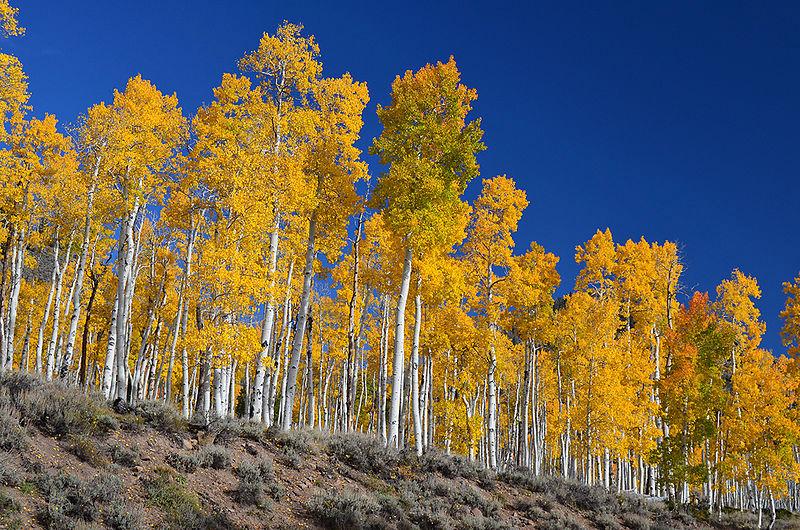ONLINE EXCLUSIVE: Aspen one step closer to being state tree
Utah is in the process of changing the official state tree from Colorado blue spruce to the aspen. The bill supporting this change, Senate Bill 41, is sponsored by state Sen. Ralph Okerlund, R-Monroe, and was passed in the Senate on Monday.
“S.B. 41 is just a two-word change in state law to change the state,” Okerlund said.
A fourth grade class from Monroe Elementary School sparked the idea for the change back in September. The class lobbied Gov. Gary Herbert on the issue.
“They posed the question about the Colorado blue spruce being Utah’s state tree, keen on the word Colorado,” said Jody Gale, a USU Extension associate professor.
Paul Rogers, chairman of the Western Aspen Alliance, said the governor wondered the same thing when he was in the fourth grade.
The class attended the committee meeting for the bill last week and testified about the aspen tree. On Monday, the entire fourth grade attended the Senate hearing – and passing – of the bill.
S.B. 41 now has to pass in the House of Representatives and receive the governor’s approval before it becomes a law.
The blue spruce was chosen to be Utah’s state tree in 1933, but it makes up less than one percent of Utah’s ecology while the aspen makes up about 9 percent.
“It may be seen as important you are trying to select a symbol more widespread and known by Utahns,” Rogers said. “Any Utahn, whether they are a city dweller or a live in rural area, can identify an aspen tree when they go in the mountains.”
Rogers said Utah is home to the world’s largest living organism, called Pando clone. Pando is a cluster of 47,000 aspen trees near Fish Lake in Sevier County that covers an estimated 106 acres of land. Aspen trees are mostly genetic clones of each other and grow from the root system outwards, hence the name Pando, which is Latin for “I spread.”
“Some would say the connection of root systems symbolically represents family, community, and state pride and connections along those social levels,” Rogers said.
Pando is being threatened along with other aspen in Utah.
“Part of the interest I have is to try and elevate aspen in the public eye and bring attention to it so that we can help reverse the decline it has seen across the West and help return it to good forest health,” Gale said.
Rogers said aspen are important because it isn’t just one tree, it is an entire forest system which “browsers” such as deer, elk, sheep and cattle survive off of.
“The primary decline of aspen decline is attributed to the lack of disturbance, lack of fire, lack of timber harvesting that haven’t happened since settlement times when our valleys were settled by the early Mormon pioneers,” Gale said.
Rogers said Pando is dying out because some trees are about 100 to 110 years old, which is old for an aspen tree.
“The real problem is that there are not babies, there are no teenagers and there are very few young adults, but we have a whole population of senior citizens,” he said.

